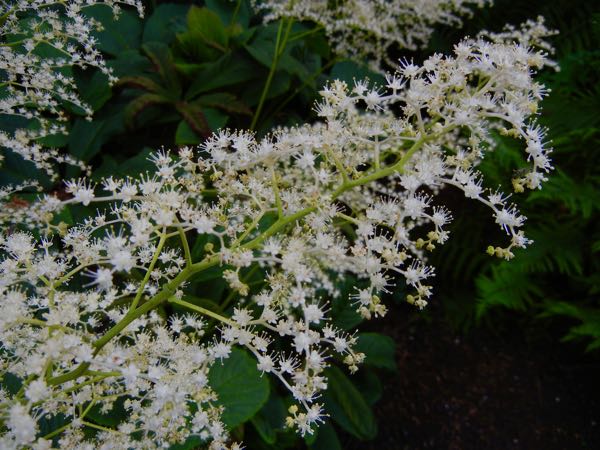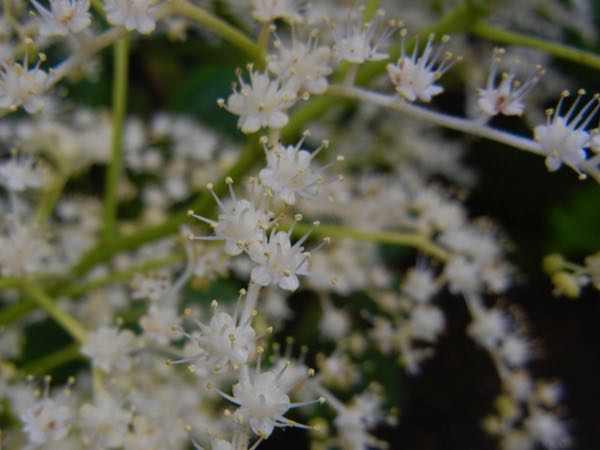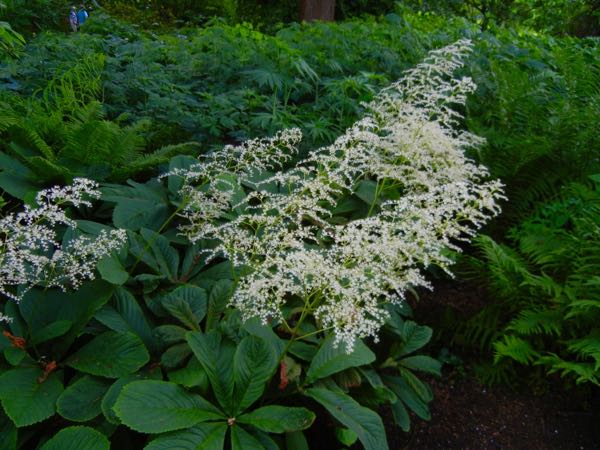Exploring the Charm of Rodgersia aesculifolia: The Chestnut-leaved Rodgersia
Background and Family: Belonging to the Saxifragaceae family of plants, Rodgersia aesculifolia is a captivating perennial native to northern China. Its unique characteristics and striking appearance make it a sought-after addition to any garden landscape.
Origin and Naming: Rodgersia aesculifolia, also known as Chestnut-leaved Rodgersia, is a herbaceous clump-forming perennial. The leaves bear a striking resemblance to those of the horse-chestnut tree, with deep veins and palmate divisions. This similarity inspired the specific epithet “aesculifolia,” referring to the genus Aesculus.
Discovery and First Published Information: This remarkable plant was first discovered during a Pacific expedition commanded by Rear-Admiral John Rodgers (1812-1882), a distinguished American naval officer. The genus name, Rodgersia, is a tribute to his contributions to exploring the Pacific region, during which the first species of this genus was found.
Characteristics and Fragrant Flowers:
Rodgersia aesculifolia is a bold, clump-forming perennial that grows to an impressive height of 3-5 feet and spreads equally wide. The plant features rhizomes that enable naturalization through thick black growth. While the attractive flowers catch the eye, it is often the large, crinkled, and coarsely-toothed basal leaves that steal the spotlight. These palmate leaves, reaching up to 12 inches in diameter, exhibit a deep green color with hints of bronze. Each leaf typically consists of seven leaflets.
From June to August, Rodgersia aesculifolia produces creamy white (sometimes light pink) apetalous flowers that bloom in large, astilbe-like terminal panicles. These panicles can extend up to 18-24 inches in length, rising gracefully above the foliage. Notably, the flowers of Rodgersia aesculifolia exude a delightful fragrance, enhancing the sensory experience of the garden. Distinctive brown hairs adorn the flower stalks, stems, and leaf margins, further accentuating the plant’s allure.
Flowering Season and Autumn Transformation: In the summer, Rodgersia aesculifolia adorns the garden with spikes or panicles of small, creamy-white star-shaped flowers. These floral displays can reach heights of up to 60 cm or 2 feet. As autumn arrives, the spent flower spikes transform into reddish seedheads, adding visual interest and extending the appeal of the plant into the changing seasons.
Cultivation of Rodgersia aesculifolia:
Sunlight: Rodgersia aesculifolia thrives in partial shade or full sun, depending on the climate. In cooler regions, it can tolerate full sun, while in hot climates, it benefits from more shade to protect it from excessive heat.
Watering: Regular watering is essential for Rodgersia aesculifolia, particularly during hot and dry weather conditions. Deep, infrequent watering is recommended to encourage deep root growth and prevent waterlogging.
Soil: This perennial prefers moist, well-drained soil with adequate organic content. In heavy clay soils, amending with sand or compost can enhance drainage and create an ideal growing environment for Rodgersia aesculifolia.
Pests and Diseases: Rodgersia aesculifolia is relatively resistant to pests and diseases. However, it can be vulnerable to aphids, spider mites, and mealybugs. Immediate treatment with insecticidal soap or neem oil is recommended if any pests are detected. Slugs, in particular, should be monitored closely to protect the young leaves.
Winter Protection: In colder regions, winter protection measures are beneficial for Rodgersia aesculifolia. Applying a layer of straw or leaves as mulch around the plant’s base helps insulate the roots from frost. Additionally, covering the plant with a frost blanket offers extra protection against harsh winter conditions.
Propagation: Rodgersia aesculifolia can be propagated through seed or division. When using seeds, it is advisable to sow them indoors 6-8 weeks before the last frost, as germination can be slow. The division is a more common and reliable method, typically performed in spring or fall. Divide the plant into two or three sections, ensuring each section has a healthy root system. Replant the divisions in their new locations, watering them thoroughly to support their establishment.
Garden Applications:
Rodgersia aesculifolia is a versatile plant that can be employed in various garden settings. It serves as an excellent choice for mixed borders or container gardens. Additionally, its imposing stature and captivating foliage make it an ideal backdrop for other plants or a standout specimen in any garden design.
Unleash the beauty of Rodgersia aesculifolia in your garden and witness its enduring appeal throughout the seasons. With its stunning leaves, fragrant flowers, and adaptability, this exceptional plant is sure to captivate both you and your visitors, creating a picturesque oasis within your outdoor space.



Also, read about Rodgersia Podophylla



